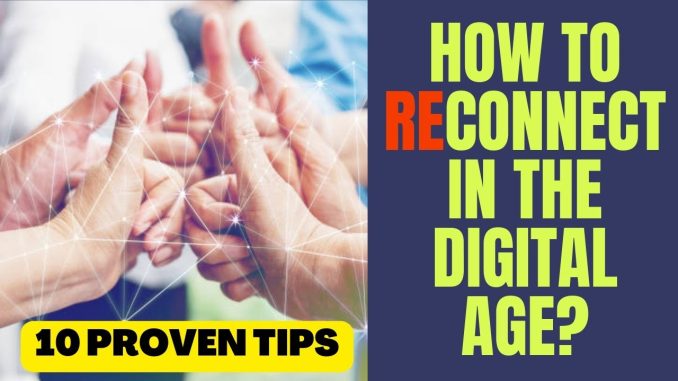
The digital age, characterized by an unprecedented explosion of interconnected devices, instant communication platforms, and pervasive social media, has fundamentally reshaped the landscape of human relationships. What began with simple email and instant messaging has evolved into a complex web of virtual interactions that profoundly impact how we connect, communicate, and perceive one another. While technology offers remarkable opportunities to bridge distances and foster new connections, it also introduces significant challenges that necessitate a mindful approach to nurturing authentic human bonds.
One of the most undeniable advantages of technology in the digital age is its ability to transcend geographical barriers and maintain long-distance connections. For individuals separated by continents, time zones, or busy schedules, video calls, instant messaging, and social media platforms have become indispensable tools. Families can share milestones in real-time, friends can stay updated on each other’s lives with a quick photo or message, and couples in long-distance relationships can sustain intimacy through virtual dates and constant communication. This immediacy and variety of communication options allow for a level of connection that was unimaginable even a few decades ago, transforming what might have once been a gradual drifting apart into a vibrant, ongoing relationship. The ability to see a loved one’s face or hear their voice, even across thousands of miles, undeniably enriches these remote interactions.
Furthermore, technology facilitates the formation of new relationships and the strengthening of niche communities. Online forums, social media groups, and specialized applications allow individuals to connect based on shared interests, hobbies, or professional affiliations, regardless of their physical location. This is particularly beneficial for those with niche interests or for individuals who might feel isolated in their immediate physical communities. People can find like-minded individuals, share knowledge, offer support, and even form deep friendships that might not have materialized otherwise. Online dating platforms, while not without their controversies, have also revolutionized how romantic relationships begin, fostering connections between people who might never have crossed paths in traditional social settings. These digital avenues expand our social networks and provide avenues for belonging and mutual understanding.
However, the pervasive nature of technology also introduces significant challenges to the quality and depth of human relationships. One of the most frequently cited concerns is the erosion of face-to-face interaction and the diminishment of non-verbal cues. While digital communication is convenient, it often lacks the richness of in-person exchanges, where subtleties of body language, tone of voice, and eye contact convey significant meaning. Text messages, emails, or even video calls can lead to misinterpretations, misunderstandings, and a general flattening of emotional expression. The constant presence of smartphones can also create a phenomenon known as “phubbing” (phone snubbing), where individuals prioritize their devices over real-life conversations, leading to feelings of neglect and resentment within relationships. This reduction in quality time and empathetic engagement can gradually weaken emotional bonds and lead to a sense of disconnect even when physically together.
Social media, in particular, presents a double-edged sword. While it offers platforms for connection, it also fosters unrealistic social comparisons and a culture of performativity. People tend to curate highly idealized versions of their lives online, showcasing only the highlights and successes. This constant exposure to seemingly perfect lives can induce feelings of inadequacy, jealousy, and dissatisfaction in one’s own relationships or personal circumstances. Research indicates that excessive social media consumption can correlate with increased anxiety and lower self-esteem, as individuals compare their unfiltered reality to the polished online personas of others. This can create a superficiality in relationships, where the emphasis shifts from genuine connection to maintaining an idealized online image.
Moreover, technology can contribute to digital addiction and a fear of missing out (FOMO), leading to a compulsive need to stay constantly connected. This can disrupt sleep patterns, increase stress levels, and further detract from genuine, present-moment interactions. The constant stream of notifications and the pressure to respond immediately can make it difficult for individuals to disconnect, even during intimate moments or dedicated social time. This over-reliance on digital validation can paradoxically lead to feelings of loneliness and social isolation, as virtual connections, however numerous, may not fully satisfy the human need for deep, meaningful, and authentic interaction. The “superficial connectivity” offered by technology can mask a deeper sense of disconnection.
Furthermore, issues of privacy and trust are magnified in the digital age. The ease with which personal information can be shared, or even inadvertently exposed, can lead to breaches of privacy and erode trust within relationships. The temptation to monitor a partner’s online activity or the proliferation of fake online identities (catfishing) are stark examples of how technology can undermine the foundational elements of trust and honesty that underpin healthy human connections.
In conclusion, technology’s impact on human relationships in the digital age is complex and multifaceted. While it has undoubtedly revolutionized our ability to connect across distances, foster niche communities, and streamline communication, it also poses significant challenges to the depth, authenticity, and quality of our interactions. The future of human relationships in this technologically saturated world hinges on our collective ability to harness the benefits of digital connectivity while mitigating its potential drawbacks. This requires a conscious effort to prioritize face-to-face interactions, cultivate digital mindfulness, set healthy boundaries for technology use, and cultivate the uniquely human skills of empathy, genuine presence, and deep emotional intelligence that no algorithm can ever truly replicate. It is in finding this delicate balance that we can ensure technology serves as a tool for richer human connection, rather than a barrier to it.